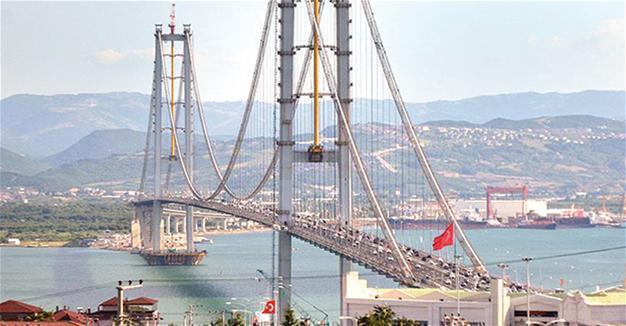Transport minister reveals details of revenue from Turkey’s much-debated toll roads
Deniz Zeyrek - KARS

A top official has refuted claims about the unprofitability of the recent three major transport projects creating an extra burden on state funds.
Several reports have recently said the number of passengers crossing the Osmangazi Bridge over the Gulf of İzmit, the Yavuz Sultan Selim Bridge over the Bosphorus, and the recently-opened Eurasia Tunnel have lagged the planned numbers originally foreseen.
The megaprojects have been built based on the public-private partnership (PPP) model. All PPP projects involve guarantees, meaning a guaranteed minimum profit for the contractors, both local and foreign, no matter how the projects perform once they become operational.
Criticism has been leveled over the lack of transparency and public scrutiny of these projects. In addition, several reports have said the number of passengers who use these new transport projects is so low that the projects are creating a serious burden on citizens’ wallets, due to the original guarantees provided to the operating companies.
“In such big projects, the desired passenger numbers are achieved an average of three years after completion. Our passenger figures for the first year of these projects are definitely in compliance with the feasibility reports filed, and these numbers will increase over time,” Transport, Maritime Affairs and Communications Minister Ahmet Arslan said at a ceremony in the eastern province of Kars on July 2.
Only 14,000 vehicles daily have been claimed to cross over the Osmangazi Bridge, which lies between two points on the southern shore of the Marmara Sea along the route of the new six-lane Istanbul-İzmir Highway Project – a number fairly lower than originally presumed.
Arslan noted the bridge is a part of a 433-km long highway project between Istanbul and İzmir. The guarantee foresaw 40,000 vehicles crossing between the Kocaeli district of Gebze and the Osmangazi district, and 35,000 vehicles crossing between the northwestern district of Orhangazi and the province of Bursa.
He said an average of 17,000 vehicles crossed the bridge on a daily basis in the first five months after it had opened in late June 2016, and this figure hit 20,000 in the following months.
“Even if one vehicle does not pass through this 433-km long project in a year, the annual guaranteed payment will not be higher than $750 million,” he added.
Regarding the Yavuz Sultan Selim Bridge, some reports have recently claimed only 38,000 vehicles per day cross the bridge, which is part of the 60-km long Northern Marmara Highway Project.
Arslan claimed that more than 100,000 vehicles now cross the bridge on a daily basis and vowed that within two years the promised number of 135,000 vehicles will be reached, rather than within three years as originally planned.
“Anyway if even one car doesn’t pass through the bridge in a year, the annual guarantee payment will not be higher than $790 million,” he added.
It has also been reported that only 34,000 vehicles daily used the Eurasia Tunnel, an undersea motorway between the European and Asian shores of the Bosphorus, but Arslan claimed the real number was higher.
“The daily passage average was 47,000 until recently and has hit 65,000 in the last 10 days. The promised guarantee for the tunnel was 68,000 vehicles on daily basis, but the main point is to look at passages on a yearly basis. The total number of passages in a certain year will be taken by us and this figure will be divided into 365 days to calculate whether the presumed daily guarantees are achieved, rather than relying on day-to-day calculations,” he said.
 A top official has refuted claims about the unprofitability of the recent three major transport projects creating an extra burden on state funds.
A top official has refuted claims about the unprofitability of the recent three major transport projects creating an extra burden on state funds.